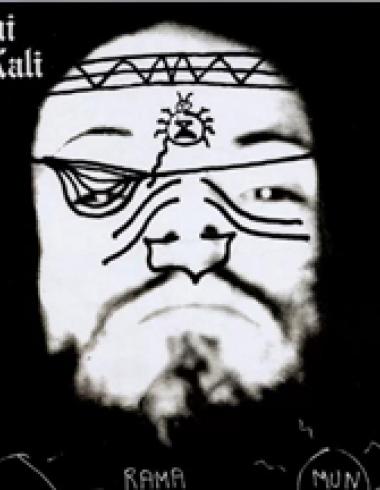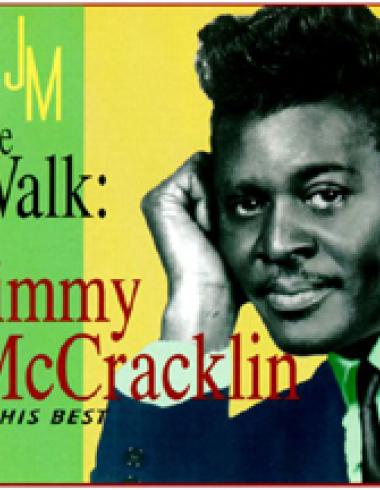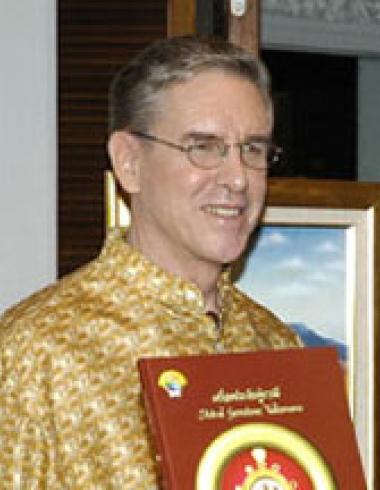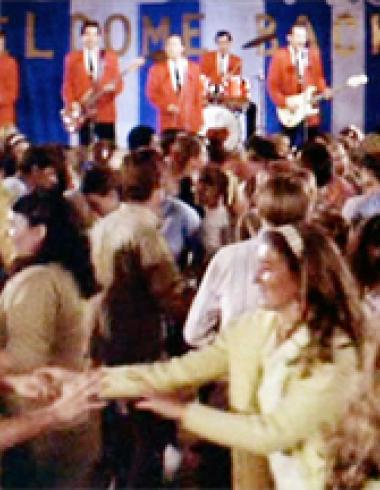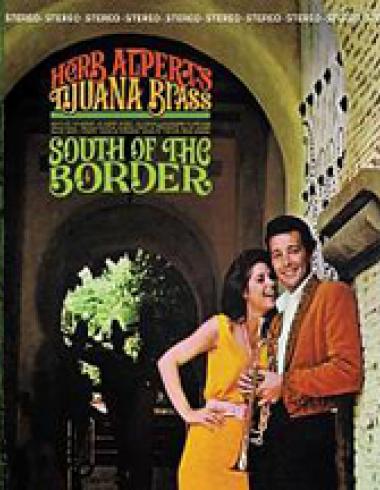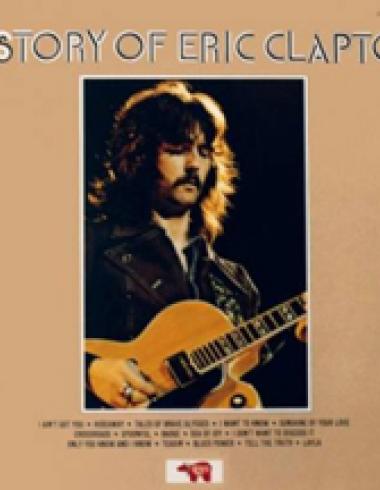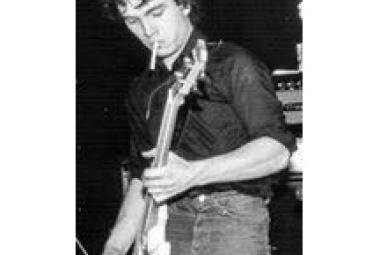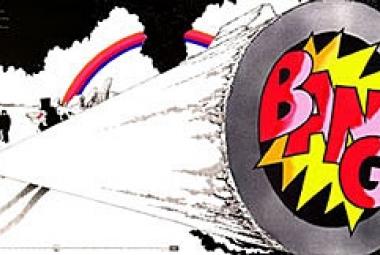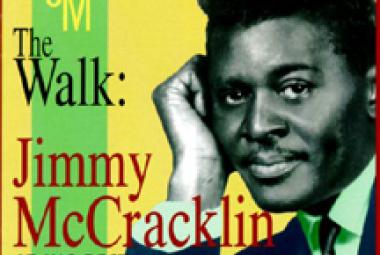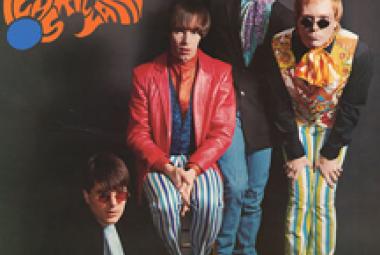ALLMUSIC – 2017-2020
After the Stooges broke up in early 1974, and before his first post-Stooges tracks were finally released by Bomp! Records as Kill City under the name Iggy Pop and James Williamson, Iggy Pop continued the collaboration with David Bowie that he had begun on Raw Power with his first two solo albums, The Idiot and Lust for Life. Both are ranked 5 stars by Allmusic; the latter album includes what is probably Iggy Pop’s best known song, “Lust for Life” (it is sometimes mistaken for a Stooges song). He was working fast, with all three of these albums released in 1977; all told, Allmusic lists a remarkable 26 solo albums in the Iggy Pop name, not counting the Stooges albums or Kill City.
* * *
In his Allmusic review of Lust for Life – featuring a smiling Iggy Pop on the front cover (unlike the fierce persona he presented on the Stooges album covers) – Mark Deming writes: “On The Idiot, Iggy Pop looked deep inside himself, trying to figure out how his life and his art had gone wrong in the past. But on Lust for Life, released less than a year later, Iggy decided it was time to kick up his heels, as he traded in the midtempo introspection of his first album and began rocking hard again. Musically, Lust for Life is a more aggressive set than The Idiot, largely thanks to drummer Hunt Sales and his bassist brother Tony Sales. The Sales [brothers] proved they were a world-class rhythm section, laying out power and spirit on the rollicking title cut [‘Lust for Life’], the tough groove of ‘Tonight’, and the lean neo-punk assault of ‘Neighborhood Threat’; and with guitarists Ricky Gardiner and Carlos Alomar at their side, they made for a tough, wiry rock & roll band – a far cry from the primal stomp of the Stooges, but capable of kicking Iggy back into high gear. . . . On Lust for Life, Iggy Pop managed to channel the aggressive power of his work with the Stooges with the intelligence and perception of The Idiot, and the result was the best of both worlds; smart, funny, edgy, and hard-rocking, Lust for Life is the best album of Iggy Pop’s solo career.”
* * *
Writing for Allmusic, Mark Deming notes: “Brick by Brick refined Iggy [Pop]’s gifts without watering them down, adding a polish that focused his talents rather than blurring them. Working with a mixture of L.A. session heavyweights (Waddy Wachtel, David Lindley) and rock stars paying their respects (Slash and Duff McKagan from Guns N’ Roses, Kate Pierson from the B-52’s), Brick by Brick leans to tough, guitar-based hard rock, leavened with a few more pop-oriented tunes that still speak of a hard-nosed lyrical approach. But the triumph here is Iggy’s; he’s rarely sung better on record, finding a middle ground between precision and abandon that honors both and surrenders to neither, and as a lyricist he reached a new level of maturity that proved he could expand his boundaries without losing touch with his roots. . . . Smart, tough, and impressive on all counts, Brick by Brick was Iggy Pop’s strongest work since Lust for Life, and marked a new high point in his career as a songwriter.”
* * *
Against the odds, Iggy Pop turns 70 next month, and his music is as vital as ever. His most recent album, Post Pop Depression (2016), ranks 4 stars from Allmusic; Mark Deming writes: “When it was announced that Iggy Pop would be collaborating with Josh Homme of Queens of the Stone Age, the music press buzzed with anticipation about the project. What would the proto-punk icon and the snarky hard rock smart guy come up with? The surprise answer is 2016’s Post Pop Depression, in many respects an unwitting but loving tribute to Pop’s friend and collaborator David Bowie. Post Pop Depression arrived two months after Bowie’s death, and was completed before his health problems became common knowledge. More than anything, though, this music evokes the sound and feel of Pop’s first two solo albums. 1977’s The Idiot and Lust for Life were cut with Bowie in Germany as Pop struggled to make sense of his life and career after the Stooges collapsed. With the reunited Stooges gone following the deaths of Ron [Asheton] and Scott Asheton, Post Pop Depression finds Pop returning to the work he made in 1977, in ways that count the most. Post Pop Depression is smart and thoughtful, intelligent without being pretentious, and full of bold but introspective thinking.”
* * *
Writing for Allmusic, Mark Deming says of the band: “One of the first and finest bands to emerge from San Francisco's punk scene, the Avengers were originally together for only two years, and they didn’t release an album during that period. But their passionate music and uncompromising viewpoints proved to be a major inspiration in a scene that would grow and flourish long after they broke up, and the handful of singles they left behind documented a band of uncommon power and force. Just as importantly, lead singer Penelope Houston was one of the pioneering women of American punk, proving there was a place for female artists in the new music.”
* * *
Tensions in the band led to their break-up by mid-1979, before they were able to release a proper album. Avengers, released in 1983 is a tough find these days; but Penelope Houston has it available as a CD-R on her website, and I managed to find a copy in an Atlanta-area record store this year. John Dougan writes in the Allmusic review: “Although it was released in 1983, this collection represents just about everything San Francisco’s late, great Avengers recorded from 1977-1978. By contemporary standards, it’s by-the-book punk thrash: Greg Ingraham's guitar spews up hairball after hairball of distortion, while Penelope Houston snarls in her best impression of Johnny Rotten. However, contemporary standards diminish what great music this was and what a great band they were. Dozens of bands came in their wake, but few could recapture the excitement and ferocity of their sound. Houston, who re-emerged years later as a folk-rocker, is in full fury on these 14 tracks, especially the youth culture solidarity anthem ‘We Are the One’ and the tale of desperation ‘Thin White Line’. A few spins of this and you’ll hear how the Avengers influenced everyone from Black Flag to X. Yes, they were that good. A forgotten classic.”
* * *
Allmusic reports that the Weirdos reformed in 1988 with original members the Denney brothers (John Denney and Dix Denney), Nicky Beat, and Cliff Roman, plus Flea from Red Hot Chili Peppers; they released a new album in 1990 called Condor. I haven’t heard that record, but I couldn’t resist sharing the above cartoon that was on the back cover of Destroy All Music. Greg Shaw used to put this kind of thing in his Bomp! Records releases and publications like Bomp! Magazine all the time.
* * *
Allmusic says about this bunch (courtesy of Steve Huey): “The Dickies were the clown princes of punk, not to mention surprisingly longstanding veterans of the L.A. scene. In fact, by the new millennium, they’d become the oldest surviving punk band still recording new material. In contrast to the snotty, intentionally offensive humor of many comedically inclined punk bands, the Dickies were winningly goofy, inspired mostly by trashy movies and other pop culture camp. Their covers were just as ridiculous as their originals, transforming arena rock anthems and bubblegum pop chestnuts alike into the loud, speed-blur punk-pop – basically the Ramones crossed with L.A. hardcore – that was their musical stock in trade. As the band got older, their music slowed down little by little; but their sound and their sense of humor stayed largely the same, and they were an avowed influence on new-school punkers like Green Day and the Offspring.”
* * *
I cannot remember a band since the 1960’s that sounds as self-assured as the Lazy Cowgirls – clearly, they have been doing it the way they want to do it from the beginning. They have an admirable, even voluminous discography – Allmusic lists 11 albums by the Lazy Cowgirls over a 20-year period. Wayne Coyne of the Flaming Lips calls them “an American institution”.
Mark Deming says of the band for Allmusic: “If the Ramones had been a road-tested biker gang instead of pop-obsessed cartoon speed merchants, they might have sounded something like the Lazy Cowgirls. Merging the buzzsaw roar of first-wave punk, the sneering attitude of ’60’s garage rock, the heart-on-your-sleeve honesty of honky-tonk, and the self-assured swagger of the Rolling Stones, the Lazy Cowgirls play raw, sweaty outlaw rock and roll at its most furiously passionate and physically intense; like a Harley gunned up to 95 mph, the Lazy Cowgirls may not sound safe, but they sure are fun.”
* * *
Hailing from Vincennes, Indiana, Pat Todd (vocalist), D. D. Weekday (guitar), and Keith Telligman (bass) headed for California to put a band together. They found another Indiana expat there, Allen Clark (drums) and began hitting the L.A. clubs as the Lazy Cowgirls. Of this early period, Todd says that they were playing countless shows for “no one, and people from work”. Chris Desjardins (former frontman of an art-punk band called the Flesh Eaters) lined them up a record deal with Restless Records, resulting in their self-titled 1984 debut Lazy Cowgirls. Fred Beldin gives the album a tepid review for Allmusic but closes with: “Despite an inauspicious start, the Lazy Cowgirls never made a bad record again, and those with a taste for intelligent but visceral rock & roll are urged to examine their catalog.”
* * *
The next outing by the Lazy Cowgirls was a live album; as fine as their studio recordings are, where the band really excelled was on stage (they tell me). The first album released by the esteemed record label called Sympathy for the Record Industry was Radio Cowgirl (1989), recorded live at a local radio station, KCSB-FM. Mark Deming writes of this album for Allmusic: “A promo spot advertising the broadcast that kicks off this album proclaims that the Lazy Cowgirls will play ‘loud, fast, hard rock & roll music’, and it’s hard to disagree. There are a few sloppy moments here and there (be warned: This is real rock & roll, where not everything is supposed to be perfect), and the sound is a bit thin (like the un-retouched two-track recording it is); but all four Cowgirls are clearly audible and pouring their heart and soul into every moment of the show (even on the joke cover of the theme from Green Acres). Besides, how many bands can cover the Ramones and the Saints alongside Larry Williams and Jim Reeves and actually do justice to all of ’em?”
* * *
My own introduction to the Lazy Cowgirls was Rank Outsider (1999). By this point, years of nonstop touring and lackluster record sales were taking their toll; D. D. Weekday and Keith Telligman left the band by 1991, and further shakeups ensued through the rest of the decade. But Weekday’s replacement on guitar, Michael Leigh returned to the line-up in time for Rank Outsider and another record that came out just six months later, Somewhere Down the Line. Mark Deming for Allmusic says of Rank Outsider: “Singer Pat Todd is in superb, revved-up form here – if anything, the guy’s vocals just get better and more confident with the passage of time – and while the presence of a few acoustic-based cuts is something new for this band, their loose, bluesy feel harkens back to Exile On Main Street-era Rolling Stones more than anyone in the MTV Unplugged crowd. Another great record from a band that knows how.”
* * *
After the Lazy Cowgirls packed it in, Pat Todd formed another band, taking its name from one of their classic albums, Pat Todd and the Rankoutsiders. Their first release is a 2-CD album on their own label (Rankoutsider Records) called The Outskirts of Your Heart (2007). Mark Deming again, for Allmusic: “In 2004, the Lazy Cowgirls, long one of the best-kept secrets in American rock & roll, finally called it quits after nearly 25 years of inspiring music, but lead singer and principal songwriter Pat Todd clearly isn’t ready to throw in the towel just yet. Todd has formed a new band, the Rankoutsiders, who follow a similar path to the latter-era Cowgirls – fast and loud old-school punk on one hand, and hard but heartfelt honky tonk on the other. However, unlike the Lazy Cowgirls, the Rankoutsiders can handle the quieter country material with the same sure hand as the louder, frantic rock stuff; and Todd’s first album with the band, The Outskirts of Your Heart, is his most impressive melding to date of his two great (musical) loves.”
The band’s website, www.pattodd.net/ notes that Hound Gawd! Records reissued The Outskirts of Your Heart in January 2017. Pat Todd and the Rankoutsiders has released three more albums since this one. Other than the two live albums and their debut, Allmusic rankings are four stars or higher on all of the Lazy Cowgirls and Rankoutsiders albums.
(March 2017)
* * *
Fever to Tell was the band’s first full album, after releasing an EP called Yeah Yeah Yeahs in late 2001. The album has an amazing variety of songs, with several snarling, noisy tracks interspersed with quieter numbers. There is an interesting reason for this; as reported in the review of the album by Heather Phares for Allmusic: “Interestingly, the moody, romantic songs on Fever to Tell are the most genuine; before its release, Karen O hinted that the Yeah Yeah Yeahs’ new material would reflect the fact that she fell in love prior to making the album. ‘Pin’ and ‘Y Control’ have great guitar lines and a unique, bittersweet bounciness; while the unabashedly gorgeous, sentimental ‘Maps’ is not only among the band’s finest work but one of the best indie/punk love songs in a long, long time.”
* * *
Allmusic sends out a weekly email called “New Release Newsletter” listing dozens of new albums, which I have gotten for years; in nearly every one, there are bands and artists represented that I know something about. In the most recent one (dated June 30, 2017), there are new albums or re-releases by the Beach Boys, TLC, Stone Sour, Jesse Malin, and Lee Bains III & the Glory Fires. Nor are these the only ones; Allmusic states in the emails: “Here are our editors’ picks for this week’s most noteworthy new releases.”
(June 2017)
* * *
Richie Unterberger notes in his Allmusic review that Let it Be is “[t]he only Beatles album to occasion negative, even hostile reviews, [and] there are few other rock records as controversial as Let it Be”. I didn’t like it much myself, particularly since I had previously heard Kum Back, which (though raw and rough in places) is better in almost every respect than the official album.
* * *
Ultimately, a revised edition of Let it Be came out in 2003, due to the hostility by many to Phil Spector’s production efforts on the original album. It was called Let it Be . . . Naked and purportedly stripped the additions and corrections made by Spector to the original Beatles recordings. As with the Iggy Pop remix of the Stooges album Raw Power, however, successfully redoing an album that has been heard for many years by basically everyone having any interest at all in the music is easier said than done. Mark Deming notes in Allmusic: “In 1997, when Columbia made plans to issue a new edition of Raw Power, they brought in [Iggy] Pop to remix the original tapes and (at least in theory) give us the ‘real’ version we’d been denied all these years. Then the world heard Pop’s painfully harsh and distorted version of Raw Power, and suddenly [David] Bowie’s tamer but more dynamic mix didn't sound so bad, after all.”
So how did Let it Be . . . Naked go down 33 years after the original release of Let it Be? The same sort of muted comments that greeted the new version of Raw Power were in evidence here as well; Wikipedia lists some of them: Allmusic notes that Let it Be . . . Naked “is overall slightly stronger [than Let it Be] . . . a sleeker, slicker album”; Pitchfork notes that Let it Be . . . Naked is “not essential [. . .] though immaculately presented”; and Salon commented that Let it Be . . . Naked “stripped the original album of both John [Lennon]’s sense of humor and Phil Spector’s wacky, and at least slightly tongue-in-cheek, grandiosity.”
* * *
From Wikipedia: “Written by [John] Lennon as an anguished love song to Yoko Ono, [‘Don’t Let Me Down’] was interpreted by Paul McCartney as a ‘genuine plea’, with Lennon saying to Ono, ‘I’m really stepping out of line on this one. I’m really just letting my vulnerability be seen, so you must not let me down.’ . . . Richie Unterberger of Allmusic called it ‘one of the Beatles’ most powerful love songs’.”
* * *
While there is a lot to love on The Basement Tapes, and I cannot argue with the 5-star rating on Allmusic and other sources, I gather that I am not the only one who was somewhat disappointed. By the time The Basement Tapes came out, the Band had gained considerable stature in the music world and were no longer just “the band” backing Bob Dylan (they were actually called the Hawks in the basement-tape days). Still, I certainly hadn’t expected that fully one third of the songs (8 out of 24) on The Basement Tapes would be songs by the Band alone, with no involvement from Bob Dylan.
* * *
Stephen Cook with Allmusic gives the album 4½ stars and writes: “Taking Brit blues invaders like Them, the Animals, and the Yardbirds as a template, not to mention plenty of ’60s garage inspiration, San Diego’s Tell-Tale Hearts forged a fairly original beat homage between 1983-1986. A bit too gritty and blues-based to really fit in with L.A.'s contemporary Byrds and pop-psychedelia revival (the Rain Parade, the Three O’Clock, Plasticland), the Hearts only cut one album, an EP, and a smattering of singles and live tracks. . . . Compiled by bassist Mike Stax and featuring the snider-than-Van Morrison vocals of Ray Brandes, the 21-track collection includes studio highlights like ‘(You’re a) Dirty Liar’ and ‘Me Needing You’, as well as some super lo-fi demo covers and a live rendition of the Seeds’ ‘Satisfy You’.”
(September 2017)
* * *
The Wikipedia article notes some of the critical reaction to Kill City: “Nick Kent of New Musical Express called it ‘a great album’. Mark Deming of Allmusic called the album ‘a minor triumph’, writing: ‘The music is more open and bluesy than on Raw Power, and while [James] Williamson’s guitar remains thick and powerful, here he’s willing to make room for pianos, acoustic guitars and saxophones; and the dynamics of the arrangements suggest a more mature approach after the claustrophobia of Raw Power.’ Martin Aston of BBC Music praised the album, calling it ‘Iggy’s most underrated album’ and one that ‘helped him get back to real life’. The Wire placed Kill City in their list of ‘100 Records that Set the World on Fire (While No One Was Listening)’.”
* * *
Still, Kill City – and the other albums in The Iguana Chronicles for that matter – has comparatively low marks from some critics. While the previous two albums by the Stooges, Fun House and Raw Power, as well as the first two solo albums by Iggy Pop, The Idiot and Lust for Life all have 5-star ratings by Allmusic, Kill City is at 3½ stars. Robert Christgau of Village Voice gave the album a B.
* * *
In fact, as the legend of the Stooges began to grow almost as soon as the final notes were played by the band in their last concert in Detroit on February 9, 1974, putting together albums by the Stooges has become something of a cottage industry. Discogs shows a total of 29 albums of Stooges music, including two CD’s that were released in 2017. Allmusic lists an amazing 54 albums. Cub Koda writes in his Allmusic review of one of the Iguana Chronicles albums, Year of the Iguana: “[The Stooges] have found themselves being exhaustively documented, with seemingly every scrap of magnetic tape bearing their imprint coming up for reissue air at one time or another.”
* * *
I have already discussed Metallic K.O., a 1976 release on the French label Skydog Records that was taken from live performances by the Stooges at Michigan Palace in Detroit on October 6, 1973 and February 9, 1974. Allmusic gives the album a 5-star rating, with Dave Thompson’s review of the double-CD reissue Metallic 2xK.O. stating: “Metallic K.O. means the world – to anyone and everyone who ever sat down and unsuspectingly dropped needle onto wax and then reeled back in horror; this ain’t rock & roll, it's a snuff movie. And the fact that it all sounds so tame these days just shows how much it’s become a part of the language. . . . [T]hrough lurching takes of ‘Open up and Bleed’, ‘Heavy Liquid’, and the ever-inspiring ‘I Got S--t’ (all of which are new to the package), past the familiar dissolution of ‘Head on the Curb’, ‘Rich Bitch’, and ‘Cock in My Pocket’, and into the nightmare closure, this remains rock & roll so far out on the edge that you get dizzy just listening to it. And, by the time the last glass explodes at the end of the world’s greatest ‘Louie, Louie’, you'll be ready to take on anything.”
* * *
Based upon the Discogs listings, the earliest album in The Iguana Chronicles series is Rough Power; Discogs shows a 1994 date for the earliest copies, while Allmusic has a release date of January 30, 1995. The back page of the CD booklet has a list of 5 other releases in The Iguana Chronicles; though they are not all marked that way (at least in early copies), in order they are the 7” EP I’m Sick of You, the reissue as a 10” EP of Jesus Loves the Stooges, the 7” single of I Got a Right and the 12” single of I Got a Right, the Kill City CD, and the 10” vinyl edition of Rough Power.
* * *
Cub Koda notes in the review of the I’m Sick of You album for Allmusic: “The sound quality is surprising good on these [demos], and any of them would have fit in perfectly with the final sequence on the released version [of Raw Power]. . . . The other five tracks capture an intriguing idea: live versions of the same tunes entering [Iggy] Pop’s solo set list throughout the ’80s and into the ’90s. It isn’t the Stooges, but it’s pretty darn good and well worth a listen.”
* * *
Cub Koda writes of the I Got a Right CD in Allmusic: “This collection rounds up every existing take of those two titles with a live version of the title cut to round things out. This is Iggy and the Stooges at arguably their peak and well worth seeking out, as the sound is appreciably better than the original 45 issue.”
* * *
Writing for Allmusic, Cub Koda says of Year of the Iguana: “This is an interesting collection that’s primarily culled from other Bomp CD collections and 10” vinyl LPs. If you’re into Iggy and the Stooges enough to have made it this far, this collection of alternate mixes (‘Death Trip’), raw rehearsal tapes (‘Rubber Legs’, ‘Head On’, ‘Till the End of the Night’, ‘Wild Love’, and an extended run-through of ‘Raw Power’), and ‘suppressed masters’ from the original Raw Power sessions (‘I Got a Right’, ‘Gimme Some Skin’, and ‘Scene of the Crime’) will almost seem like a greatest-hits package of sorts. And for the new fan who’s just discovered the chaotic magic that was the Stooges – and has heard the rumors that there’s material far more incendiary than their three studio albums – this compilation will serve just that purpose, sifting through the unending maze of unissued Stooges material to make a single-disc package that hits on the spots.”
* * *
Charles Spano writing for Allmusic says of Wild Love: “Though lacking the teenage venom of cuts like ‘1969’ and ‘I Wanna be Your Dog’ off of The Stooges and the unadulterated raw power of, well, Raw Power, Wild Love is still essential for die-hard fans. The album, culled from rehearsals in Detroit, Los Angeles, and New York for the band’s 1973 tour, runs the gamut from full-fledged, ready-to-record tunes to the types of swampy jams that the band has claimed indicative of their studio songwriting process. Gems like the three minutes of rock & roll bliss dubbed ‘Wild Love’, the rambling, grinding ‘Pinpoint Eyes’, the Stonesy ‘I Came From Nowhere’, and the eerie, sprawling ‘Til the End of the Night’ could have given Iggy Pop the material for a stunning solo debut as early as 1973.”
* * *
The Wikipedia disambiguation page for SS-20 says that there are also punk rock bands with this name from Cincinnati, Ohio and from Mexico. Allmusic lists an album from the Cincinnati band SS-20 called Capital Class; Discogs calls both of them hardcore punk bands and shows 4 albums for each, noting that the band from Mexico is fronted by a woman.
* * *
From Wikipedia: “Allmusic’s Richie Unterberger wrote that ‘“Pushin’ Too Hard” [by the Seeds] is one of the songs most commonly cited when people are trying to celebrate or denigrate 1960s garage rock, and sometimes championed for precisely the same reasons as others put it down, though in time the critical balance tended toward praising the tune rather than dumping on it.'”
* * *
Before and after their involvement with SS-20, Bruce Wagner and David Winogrond were in a band called Skooshny. The Allmusic article on the band by Bryan Thomas says: “Skooshny is an L.A.-based psych-folk-pop trio who originally came together in 1971, a time that singer/guitarist Mark Breyer later said was ‘too late for the Byrds, too early for R.E.M.’” Skooshny released numerous songs beginning in the mid-1970’s but did not put out an album until Skooshny (1991), a retrospective album that collected their material from 1975 to 1981.
(December 2017)
* * *
Also on tap this coming year is an overview of New Wave Theatre, a fascinating public-access show that presented LA-area punk rock bands amongst other assorted weirdness that would air at the end of the popular late-night program Night Flight on USA Network. I have poked around on the Internet, and even though all of the episodes are now available on YouTube, not much has been written about the show – the Wikipedia article on New Wave Theatre has basically two or three paragraphs. Thus, I am going to have to do some primary research before I can get this post put together. I do plenty of that with the UARB’s and UARA’s, but for the remainder of the posts, I typically lean on Wikipedia and Allmusic. In other words, that is something else that I have been putting off. I had always hoped to at least keep this up for at least 10 years, but I am not there yet.
I also have a CD or two of potential UARB’s in the religious category, but I have already written extensively about “rock and religion” in five earlier posts, so coming up with something new to say is also going to take some time. As it turned out, I had more to say about rock and religion than I had UARB’s to talk about: One of the UARB’s had “Christ” in the name but that’s it, Mötochrist; and another was a gospel group called Wendy Bagwell and the Sunliters that was not in the least a rock band. Same thing about “women and rock” – I have five posts on that also, but that will be an easier topic to expand on. Anyway, we’ll see how the year goes. It is going to be hard for me to top the list of UARB’s for this past year, that’s for sure. I have even considered changing the definition of UARB to include those that do have a Wikipedia article but nothing in Allmusic, but I haven’t gone that far yet.
(Year 8 Review)
* * *
In order to make sure I catch them all, I figured that the best way was to go through all of the webpages alphabetically. So far I have gotten into the F’s; I have only been doing this since mid-August, so that’s not bad for well under six months. This includes all of the extensive writing on Allmusic, the Beatles and Bob Dylan. I am trying to get through it as fast as I can (having retired as of the first of the year will definitely help), not only because I have an as yet unspecified deadline before Classic Google Sites goes away, but also because I doubt that I will ever find a text editor that works as well and has as many features as this one. I doubt that I will get much new writing about music done, but I have other priorities now.
(Year 9 Review)
* * *
Speaking of “one of the best”, I managed to stumble upon a 12” single by the Lime Spiders I think in Fairhope, AL, called “Jessica”. I absolutely love that song and regularly pull the disk out of my stacks to replay it. Despite pretty active shopping on my part, that is the only record by this Australian band that I have ever found, after reading about them in the Village Voice more than 30 years ago. Finally found out why; as noted in Allmusic: “The bottom line is this: The Lime Spiders’ catalog is unavailable in the United States.” I checked the 12” single that I had, and sure enough, it was made in Australia. About as soon as I found that out, I ordered their retrospective collection on Amazon.com, Nine Miles High 1983-1990. Hoo boy, is that a great record.
(Year 10 Review)




